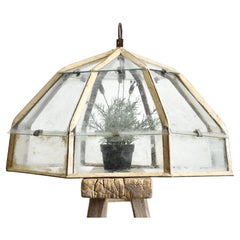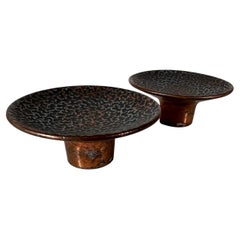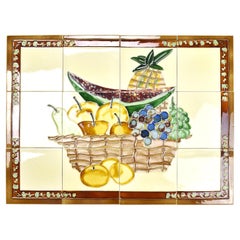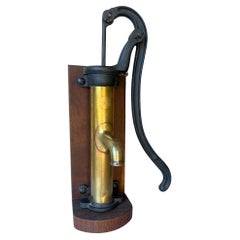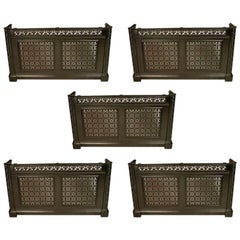Unknown Architectural Elements
Early 20th Century French French Provincial Unknown Architectural Elements
Steel
1960s Mid-Century Modern Vintage Unknown Architectural Elements
Brass
1950s German Art Nouveau Vintage Unknown Architectural Elements
Ceramic, Majolica
Early 1900s French French Provincial Antique Unknown Architectural Elements
Brass
Late 19th Century English Arts and Crafts Antique Unknown Architectural Elements
Iron
18th Century Dutch Georgian Antique Unknown Architectural Elements
Pottery
Late 19th Century French Arts and Crafts Antique Unknown Architectural Elements
Bronze
20th Century Moroccan Moorish Unknown Architectural Elements
Wrought Iron
17th Century Persian Islamic Antique Unknown Architectural Elements
Ceramic, Pottery
Early 18th Century French Louis XIV Antique Unknown Architectural Elements
Stone
19th Century Moroccan Moorish Antique Unknown Architectural Elements
Iron
2010s Chinese Modern Unknown Architectural Elements
Other
19th Century Moroccan Moorish Antique Unknown Architectural Elements
Wood
Late 19th Century French Other Antique Unknown Architectural Elements
Statuary Marble
Late 19th Century English Victorian Antique Unknown Architectural Elements
Brass, Iron
This 18th-century antique French limestone trough (reference: OT213) is a rare, one-of-a-kind architectural salvage piece sourced from the rural countryside near Clermont-Ferrand, France. Carved by hand between 1760 and 1780, this substantial trough measures 201 cm wide × 130 cm deep × 71 cm high and weighs approximately 3,000 kg. The surface shows an authentic timeworn patina developed over centuries of use, enhancing its historical character.
Material & CraftsmanshipCrafted from solid French limestone (pierre calcaire), this trough was hand-carved from a single block. Its robust composition makes it highly resistant to weathering, while the natural stone’s subtle tonal variations and aged surface bear witness to its centuries-old origin.
Hand carving in the 18th century involved traditional chiseling techniques by skilled stonemasons, leaving subtle tool marks that add to its authenticity and charm.
Possible Uses in Landscape & Garden DesignDue to its size, weight, and historic appeal, this antique stone trough can serve as:
A focal point in a formal or rustic garden design An antique stone planter for trees, shrubs, or seasonal arrangements A water feature basin in a courtyard or landscaped estate A statement piece for heritage property restoration Historical ContextStone troughs of this period were originally used in agricultural settings to hold water or feed for livestock. Their practical role and durable construction have ensured their survival for centuries, making them highly sought after by garden designers, landscape architects, and heritage property owners worldwide.
Why Choose De Opkamer?De Opkamer is a recognised specialist in sourcing authentic European architectural...
18th Century French Other Antique Unknown Architectural Elements
Limestone
21st Century and Contemporary American Neoclassical Unknown Architectural Elements
Concrete
Early 19th Century French Country Antique Unknown Architectural Elements
Limestone
2010s American Modern Unknown Architectural Elements
Bronze
20th Century Belgian Art Deco Unknown Architectural Elements
Marble, Brass
Late 19th Century French Louis XIV Antique Unknown Architectural Elements
Stone
Early 19th Century Belgian Louis XIV Antique Unknown Architectural Elements
Marble
2010s Chinese Modern Unknown Architectural Elements
Other
19th Century Italian Antique Unknown Architectural Elements
Marble
1880s Antique Unknown Architectural Elements
Pine
Early 20th Century Italian Hollywood Regency Unknown Architectural Elements
Marble, Bronze
Late 20th Century Mid-Century Modern Unknown Architectural Elements
Brass
Early 20th Century Rustic Unknown Architectural Elements
Wood
Mid-18th Century French Regency Antique Unknown Architectural Elements
Stone
18th Century French Louis XIV Antique Unknown Architectural Elements
Stone
Late 18th Century French Louis XVI Antique Unknown Architectural Elements
Stone
17th Century Spanish Baroque Antique Unknown Architectural Elements
Other
20th Century Moroccan Moorish Unknown Architectural Elements
Cement
20th Century Moroccan Moorish Unknown Architectural Elements
Wrought Iron
1850s French French Provincial Antique Unknown Architectural Elements
Zinc
Late 20th Century American Federal Unknown Architectural Elements
Plaster
18th Century French Other Antique Unknown Architectural Elements
Limestone
18th Century Antique Unknown Architectural Elements
Marble
2010s Finnish Post-Modern Unknown Architectural Elements
Brass
18th Century French Other Antique Unknown Architectural Elements
Limestone
20th Century Moroccan Moorish Unknown Architectural Elements
Wrought Iron
20th Century Moroccan Moorish Unknown Architectural Elements
Cement
20th Century Moroccan Moorish Unknown Architectural Elements
Cement
This remarkable antique well-head is an exquisite example of 18th Century craftsmanship. Made from high-quality French limestone, it showcases intricate carvings and timeless elegance in the Louis XIV style. Originating from Paris, France, and dated between 1760 and 1780, this wellhead is a true piece of history and artistry. Its provenance and perfect condition make it an exceptional find for collectors and garden enthusiasts alike.
History of Antique Wellheads...18th Century French Louis XIV Antique Unknown Architectural Elements
Limestone
Late 20th Century American Federal Unknown Architectural Elements
Plaster
1960s Czech Mid-Century Modern Vintage Unknown Architectural Elements
Metal, Iron
2010s American Modern Unknown Architectural Elements
Bronze
19th Century Japanese Japonisme Antique Unknown Architectural Elements
Bronze
2010s Dutch Modern Unknown Architectural Elements
Aluminum
2010s Chinese Modern Unknown Architectural Elements
Other
2010s Chinese Modern Unknown Architectural Elements
Rock Crystal
2010s Chinese Modern Unknown Architectural Elements
Rock Crystal
2010s Chinese Modern Unknown Architectural Elements
Rock Crystal, Bronze
18th Century French Regency Antique Unknown Architectural Elements
Stone
2010s French Modern Unknown Architectural Elements
Metal
2010s French Modern Unknown Architectural Elements
Metal
2010s French Modern Unknown Architectural Elements
Metal
20th Century Moroccan Moorish Unknown Architectural Elements
Cement
Late 18th Century French Louis XVI Antique Unknown Architectural Elements
Marble
Early 20th Century European Arts and Crafts Unknown Architectural Elements
Wood, Oak
Unknown architectural elements for sale on 1stDibs.
- 1stDibs ExpertSeptember 9, 2024Yes, paintings by unknown artists may be worth something in some cases. When a painting’s maker isn't a well-known artist or is completely anonymous, factors like the visual appeal, historical significance, previous ownership and condition will determine the value of a painting. A certified appraiser or experienced art dealer can evaluate your piece using these criteria and provide you with an estimated value for your art. Shop a wide range of paintings on 1stDibs.
